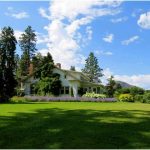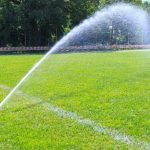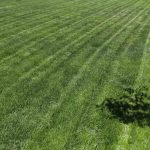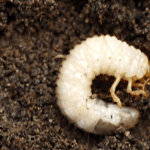Your lawn should be growing in full swing by late April. You may have a lawn disease if your lawn is not growing or has visible trouble areas. There can be a current lawn disease that isn’t obvious until this time of year.
Below are three common perpetrators that may be the reason your lawn hasn’t turned green yet.
Snow Mold
This lawn disease can only be dealt with preventatively. If you have snow mold you’ll need to treat the area and start fresh.
So what is snow mold? It is a fungus that affects cool-season grasses, the most common types of grass in Colorado. You’ll know your lawn is affected when snow has melted away and you see patchy tufts throughout the grass that appear grayish-white or pinkish-white. Gray snow mold tends to only affect the blade. Pink snow mold tends to harm your lawn all the way down to the root resulting in dead patches under the mold.
In order to repair you’ll need to gently rake the affected areas. Avoid using heavy machines like a power rake. Have a liquid aeration performed to improve soil quality. The aeration breaks up the soil underneath and also applies a wetting agent to optimize root health. This will increase the probability of saving your lawn from snow mold damage. Mother nature can be quite cruel though so overseeding the affected areas is highly recommended in severe cases.
As already mentioned, prevention is key here. Snow mold starts when there is a big dump of snow before the ground freezes. This type of weather phenomenon happens regularly here in the Mile High City. Anyone who has lived here long enough knows how unpredictable our winters can be. Taking some time in the fall once all the leaves have fallen to give your lawn some TLC before it goes into hibernation can set you up for success in avoiding snow mold. You’ll need to rake up all the fallen debris dispersed throughout your lawn and remove it. Then you’ll want to mow at a lower setting for the final cut. Long grass/rotting leaves and heavy wet snow are a breeding ground for snow mold.
Winter Mites
These little buggers are a pest and not necessarily a disease but the damage they can leave behind is a bit unnerving. The issue with mites happens yet again due to our unpredictable weather patterns in Colorado. The winter of late 2017 – early 2018 was particularly dry and the temperature stayed consistently above 40 degrees Fahrenheit. It was an unusual winter but not something that was unheard of. As spring hits Erbert Lawns is flooded with calls from customers wondering why the heck it is April and their lawn is still sleeping. Upon investigating it they discovered that these lawns weren’t stuck hibernating, they were done for. When no one was looking, mites sucked the life out of these lawns.
Our weather will continue to be unpredictable, that’s just Colorado. Once the lawn is done for like that you’ll need to re sod and apply a preventative mite control treatment regularly throughout the winter months to ensure it won’t be affected by mites.
Dollar Spot
What this disease has in common with another one on our list is that it is evidence of a fungus colonizing within your lawn. Dollar spot is easily identifiable to lawn care professionals due to its circular pattern and half dollar size which gave it its name. Treatment is also pretty tough in this situation and it all comes down to preventative maintenance on your lawn.
Ideally spring would bring rain showers. If this rain meets hard compacted soil a breeding ground for Dollar spot. A liquid aeration along with proper watering and fertilization will stop the fungus before it can start. If damage has already occurred then gently raking and re seeding can help the affected areas fill in once the soil quality and root health is improved.
Dollar spot is possible all year round so it’s important to continue maintenance for the lush green color you desire. A healthy lawn is a green lawn.
Give us a call or text us for more information. 303-948-6631










